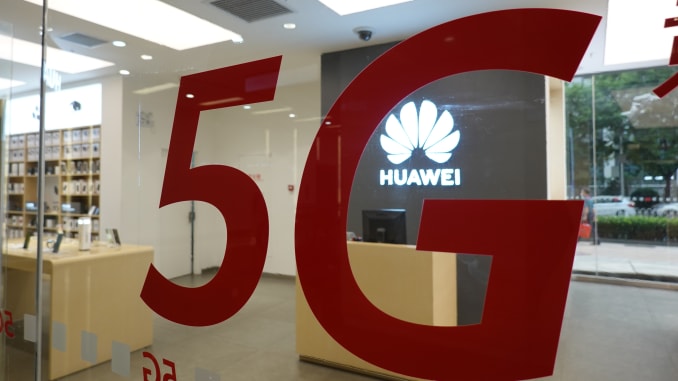John Strand writes on the implications of the decision by the UK government to ban Huawei and other Chinese telecom concerns. Read a brief of his analysis below.
Today, the United Kingdom government will published the new guidelines on the use of Chinese network infrastructure equipment from, among others, Huawei. (See Strand Consult’s note on the last tightening) In practical terms, the existing rules are tightened by doing the following:
- The ban on the use of ZTE equipment in the UK is maintained.
- Huawei continues to be a classified as a high risk vendor.
- Establish that the purchase of 5G Huawei equipment will be banned from January 2021.
- Maintain the current limitations on the use of Huawei’s equipment on wireless and wireline networks
- Require all Huawei equipment to be phased out by 2027.
If you have followed the debate in the UK in recent months, then there are not many surprises in today’s decision. Today’s China is not the China of 5 years ago; it has become aggressive and belligerent. While the rest of the world has grown more aware of human rights, China is increasingly intolerant. With its recent action in Hong Kong, China did the unthinkable from the UK perspective and has irrevocably changed the UK view on China.
The UK decision comes after last week’s hearing in the Science and Technology Committee of the UK Parliament. It featured Andrea Dona, Head of Networks, Vodafone UK and Howard Watson, Chief Technology and Information Officer, BT Group. These companies testified that a ban on the use of Huawei equipment will cost them billions of pounds, lead to service outages, and prevent the roll-out of 5G in the UK. The hearing is such that the members of Science and Technology Committee take at face value the comments by Andrea Dona and Howard Watson.
Strand Consult does not agree with Vodafone or BT.
It is hard to take the statements from Andrea Dona from Vodafone and Howard Watson from BT seriously. Indeed, they directly contradict statements made to investors in January and February of this year. In any event, one can determine the truth by reviewing the following facts:
- First, Vodafone’s figures. In Light Reading, Iain Morris described the following that the UK bill for the Huawei restrictions don’t add up. The cost to rid the UK of Huawei’s presence seems to be growing like the national debt. “Hundreds of millions” was the figure Vodafone faced about a year ago; now it is billions.
- Operators must upgrade their networks if they want 5G, regardless of whether they use Huawei. There is a sunk cost to network upgrades which must be subtracted from the total cost of using Huawei. Most of Europe’s networks are already 3-5 years old and are ready to be replaced.
- 70–80 percent of the existing RAN equipment must be replaced, regardless of the political decision or the choice of vendor.
- In the last 3 years, mobile operators in Europe have bought radio access network (RAN) equipment for $8.75 billion (about $2.9 billion annually). Forty percent of this equipment has been purchased from Huawei and ZTE. A conservative estimate suggests that replacing the Huawei and ZTE equipment purchased since 2016 (which “probably” can be upgraded to 5G) will cost $3.5 billion. This amount compares to 14 months of total European radio access network (RAN) purchases, a small number both for Europe and the world.
- At year-end 2017, 85 percent of the population in Europe (465 million people) subscribed to mobile services. The actual cost to replace the Chinese equipment is $3.5 billion for the non-upgradeable equipment. The cost is equal to a “one-time cost” of $7 or €6.5 per mobile subscriber.
- Examine the financial statements of mobile operators which have ended their Huawei contracts in 2019/ 2020 and switched suppliers. If it were true that not using Huawei would increase costs, we would see the CAPEX increase. However, we can see from Denmark’s TDC and Norway’s Telenor and Telia that costs did not go up for the same investment when these operators chose to replace Huawei with Ericsson. The same can be said for KPN in Netherlands which switched from Ericsson to Huawei.
- If you look at this case study from 2010 that Huawei completed after a network swap in Norway with 6,000 sites in 10 months, it’s hard to believe it will take up to six years to complete the same process in the UK.
- Strand Consult´s new report The real cost to rip and replace Chinese equipment from telecom networks debunks the story from Vodafone and BT and explains how a proper economic analysis must be prepared to examine the impact of restricting Huawei and ZTE. In practical terms, hardware and software within the network are constantly being upgraded and improved as the standards evolve from 2G to 3G to 4G to 5G, and in many cases, operators may offer a blend of different standards in the same network as they upgrade. In general, European operators are facing an upgrade of 4G networks built between 2012 to 2016. This goes for Vodafone and BT as well.
What if Vodafone and BT are right?
If what Vodafone and BT said was true, then here are the consequences.
- There is some evidence that BT and Vodafone and their shareholders have not taken into account the economic consequences related to the restrictions that may come in relation to the use of Chinese equipment in the UK as well as a number of other countries. In practical terms, a discount should be factored into the share price that Vodafone and BT are trading at today.
- If other operators such as TDC, Telenor, Telia KPN and Bell Canada do not experience the same costs as BT and Vodafone claim they will experience, then the other operators’ technical staff are more skilled than those in Vodafone and BT.
- If other operators such as TDC, Telenor, Telia, KPN and Bell Canada do not experience the same delays as BT and Vodafone claim they will, then the other operators’ technical staff must have some skills Vodafone and BT lack.
- BT said bans would result in blackouts with switching equipment. However mobile operators around world are switch out equipment every day without blackouts. Why is BT the only operator with this problem? Apparently. it needs to improve its technical staff.
- If the challenges that BT and Vodafone say they run into are due to planning permissions and city restrictions, then these are things that the UK government should be able to solve as Denmark did for Danish operators.
- O2 does not use Huawei equipment, and it is in a great position. It can give them an advantage in marketing to customers who want to ensure that their data does not fall into the hands of the Chinese government. See Strand Consult’s research note: The pressure to restrict Huawei from telecom networks is driven not by governments, but the corporate customers.
Let’s assume that what BT said is true. Then it doesn’t match what BT’s CEO Philip Jansen and BT’s CFO Simon Lowth said at their Q3 2020 Earnings Call on January 30, 2020.
Let’s assume that what Vodafone said to the Science and Technology Committee in the UK Parliament was true. Then it doesn’t match what Vodafone CEO Nick Read and Vodafone’s CFO Margherita Della Valle said at their Q3 2020 Sales and Revenue Call on February 5, 2020.
Strand Consult’s conclusion is that Vodafone and BT took a calculated risk to buy Huawei, and it backfired. It appears increasingly that the companies must live with the consequences of their decisions. O2 does not use Huawei equipment, and it is in a great position. It can give them an advantage in marketing to customers who want to ensure that their data does not fall into the hands of the Chinese government. See Strand Consult’s research note: The pressure to restrict Huawei from telecom networks is driven not by governments, but the corporate customers.
Contact Strand Consult today to get your free copy of the report Understanding the Market for 4G RAN in Europe: Share of Chinese and Non-Chinese Vendors in 102 Mobile Networks. If you have any questions please, send me an email on [email protected].
Strand Consult has one goal: to create transparency so that decisions are made on an informed basis.































